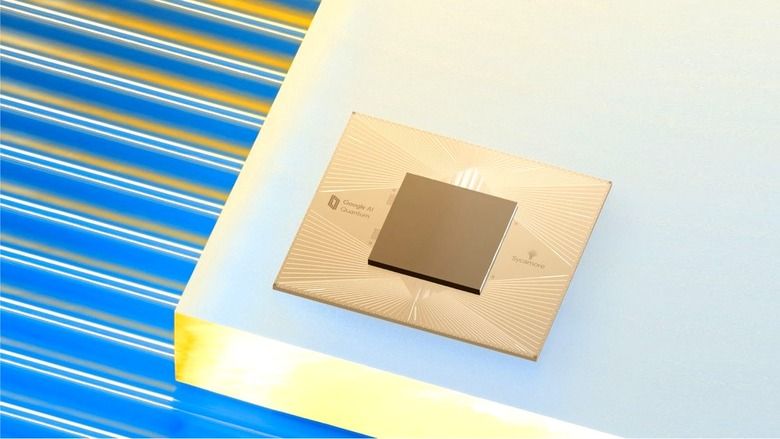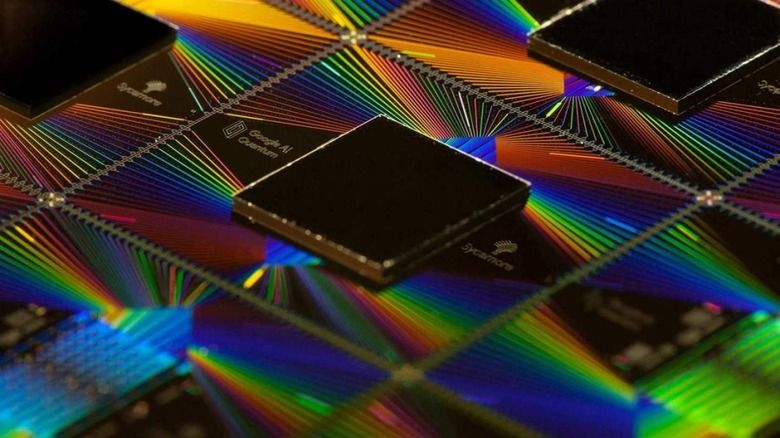Google's Quantum Processors Take Stable Time Crystals Beyond Just Theory
Time crystals are back the news, rather than the people from TimeSplitters. A report recently published in Nature builds upon previous research released earlier this season on time crystals, a fresh phase of matter that holds significant promise for future years of quantum computing. These times, the researchers say Google's Sycamore quantum hardware was used to see a well balanced time crystal.
What's a period crystal?
Unless you're a physicist, the type of a period crystal is probable difficult to comprehend. Researchers from Stanford University, among the institutions behind the brand new study, describe this phase of matter as comparable to "a clock that runs forever without the batteries." Google attempts to help expand simplify things, explaining on its blog that point crystals feature atoms that form "an oscillating pattern [. ] with time."
When someone thinks of crystals, they likely imagine something such as precious gemstones. Those crystals feature layers of atoms that, if observed at the microscopic level, form repeating patterns in space. Time crystals differ – and seemingly break the laws of nature – by featuring atoms infinitely repeating with time without additional energy or entropy.
Stanford notes that point crystals do not, actually, break the laws of physics, as their entropy "remains stationary as time passes, marginally satisfying the next law of thermodynamics by not decreasing." The idea of time crystals – that's, of stable matter made up of atoms that form an oscillating pattern with time – was proposed in the past, however the new creation of a period crystal is really a huge milestone in neuro-scientific quantum physics (via APS Physics).
Creation breakthrough

The brand new breakthrough originates from researchers with Google Quantum AI, Stanford University, Oxford University, and the Max Planck Institute for Physics of Complex Systems. This new development represents the initial instance of a period crystal demonstrating what's called many-body localization, circumstances that past "almost-time-crystal" experiment milestones didn't achieve, in accordance with Stanford.
Google Quantum AI's Sycamore quantum computing hardware played a significant role in this development. The project involved utilizing the hardware to verify enough time crystal therefore; without this, a thing that seems to be a period crystal could, actually, eventually belong to inevitable disorder over a seemingly unfathomable time frame.
Quantum computing – in cases like this, the Sycamore processor – steps directly into take notice of the oscillating patterns with time, taking the claim of a well balanced time crystal and using hard data to show it. Stanford notes that quantum computing hardware is imperfect with "finite size and coherence of time," but that researchers could actually overcome these limitations with various protocols.
This experiment involved utilizing Google Quantum AI's hardware going to enough time crystal with 20 spins of quantum items of information (qubits); a couple of hundred cycles of the oscillations were observed, as indefinitely watching enough time crystal over eons to verify its stability isn't possible.
Max Planck Institute for Physics of Complex Systems director and study co-author Roderich Moessner elaborated on the usage of Google's hardware within the time crystal experiment, stating:
In the years ahead
"Developing a new phase of matter is obviously exciting on a simple level," the Stanford researchers said within their announcement. Google, because of its part in this development, points toward the exciting future quantum computing promises, at the very least with regards to scientific discovery and the near future quantum innovations that could result across a number of fields.
Google explains that there surely is still ample work to perform before a genuine quantum computer is developed, though its Quantum AI division anticipates developing "a good, error-corrected quantum computer" in this decade.
The business has spent years making contributions to the algorithms and theories that'll play key roles within an eventual error-corrected quantum computer. For the present time, the business's quantum processors offer scientists ways to confidently model stable time crystals, opening the entranceway for a fresh world of explorations into new phases of matter.
